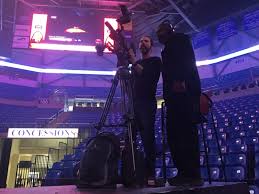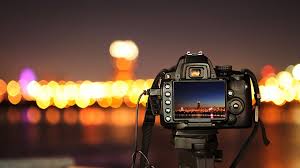Planning the Perfect Event Videographer
Special Event Videography – Top Tips to Ensure a Successful Video Shoot
When I create a film for a client, my heart and soul goes into it. I may not have the head of a poet, but I am aware of adhering to the cornerstones of videography which will stack the odds in my favour of creating a good film. If you follow the basics, the poetry will eventually follow.
Plan Your Shoot
Don’t turn up cold and expect everything to fall into place, have a plan, have a contingency plan, and in fact have a third plan just in case your first two were really stupid. Nothing will make you look less professional in front of your client than being stumped by the unexpected. Your film needs to tell a story and it is your job to provide yourself the opportunities to be able to gather all the facets together that will enable you to tell that story effectively. Be prepared but also be flexible.
Stripe Your Tapes
Non-linear editing suites use time codes to automatically capture scenes from tape. Any breaks in the time codes, caused by stopping and starting recording, will cause this feature to stall. Ensure there are no gaps by placing the lens cap on the camera and pressing record for the entire tape. Rewind the tape and it is ready to go. And please write on the tape, the tape case and use some sort of clapperboard so you know what, where and who is on the tape. Hunt For The Digital Video is an unnecessary and time consuming game and not to be played while driving to a client’s house.
Get an Establishing Shot
Grab the viewer’s attention, inspire curiosity, impart enough information to engage the viewer. Think about films, images or photographs that have had an impact on you. What were the elements that stood out for you, how can you duplicate them or replicate them to suit your filming requirements. Personally, I have always been emotionally moved by Apocalypse Now and the scene where the severed head is thrown into the prisoner’s bamboo cage to land face up in his lap. However, I am yet to duplicate it and work it into a baby film. Be discerning.
Capture Lots of Footage
As a general rule you should shoot approximately five to six times the amount of film that you will eventually use. It may take time but trust me, when it comes to putting your film together you want a lot of shots to choose from. You may have planned and executed the perfect shot and find that one of your off the cuff filler shots works far better.
Use a Tripod
Invest in a fluid head tripod and get steady, level shots. Your film will look very amateurish if it is all over the place, unless of course you are having a poet moment and you specifically want that look, in which case we will call it a special effect.

Dress Like You Belong There
As a photographer, there are plenty of times when you can go to work in jeans and a t-shirt, after all clients aren’t watching you do post production. When photographing a special event however, you should dress like you belong there and blend in with the crowd. This doesn’t necessarily mean a suit and tie every time for men, or that a blazer is necessary for women, but slacks/dressy pants, comfortable, low key, black shoes and a nice shirt/blouse usually are a must. If it is a higher end event you men should be sure to wear a suit coat and tie while women should wear a blazer if they feel it is necessary. If you’re unsure of the appropriate attire, always err on the side of safety if you’re over dressed you can always take the coat off and stick the tie in your pocket.
Take Pre-event Shots
While it may be an afterthought for your client at the event, the event planner responsible for dotting the i’s and crossing the t’s will love that you captured shots of the room prior to the guests arrival. Not only will it be something they can use to sell their services in the future, it will also allow them to catalog the set-up in case they have a very similar type of event in the space again. This will prove invaluable to the client and should be the way you start any event.

Know when to use flash
Us photographers love the feel of natural lightning. However, understanding how and when to use artificial light can be of great value in low-light situations and environments.
Indoors: Churches, Weddings, Corporate Events
When taking event photography indoors, it is strongly recommended that you use an external flash where it can be bounced off a white ceiling or wall for a more natural look. Remember TTL mode is your best friend when it comes to using external flashes. Though, don’t be afraid to adjust your flash exposure compensation for greater results.
Outdoors – Festivals, Sports
I know a lot of photographers who don’t bother with flash outdoors, or they think flash looks unnatural. You’ve just got to use it in the right situations; when your subject is poorly lit, when shooting backlight or overpowering the sun to avoid heavy shadows.
Frame the shot
Groups of 3 – 5 people landscape is a good shoot composition. Mix up your shots with full body, medium shots and head shots. Crop tightly and avoid white or blank space unless that is the look you are going for. Step back a bit and use a longer focal length. You don’t want distortion now do you?

Audio is crucial, have backups ready.
There are no re-“I Dos” in weddings. If you don’t capture things as they happen, then you didn’t do your job. It’s best to have multiple audio sources recording. Does your camera capture quality sound? If not, have external recorders ready to go. Try to avoid putting the mic on a bride, instead go for a lavalier microphone on the officiant or groom.
If the DJ is running sound, you may be able to plug into their sound board. That’s why it is beneficial to have talked to the DJ before hand. Keep in mind every DJ is different, so it’s no guarantee that you will get quality sound. That’s why you should only rely on them for backup audio.
Prepare for low light situations.
Evening receptions can be a nightmare for wedding filmmakers. Indoor or outdoor, it will probably be dark. After dinner is served, venues dim the lights so the party can begin. Hopefully you and the DJ also talked about his light setup, but you will still need your own lights to help you get certain shots.
If your camera doesn’t handle low light well, keep in mind that guests don’t want to be blinded by video lights all night. When you use lights, be sure to use them sparingly. Don’t kill the mood by leaving them on during the entire reception.
Lose the gear, lose the stigma
The general public can’t seem to shake the clichéd idea from the 1990s of somebody with the huge video camera at weddings. There’s some fantastic technology around, from drones to Steadicams: but stop and think for a minute. Don’t be that guy getting in the way, doing circles around the dance floor… or the guy with the annoying buzzing helicopter, or the massive fluffy microphone that’s obviously recording everything you say. Try stripping it back to just your camera. Master how to use it properly: it could be the best decision you make.
Adopt simpler cinematic techniques
Although I favour a documentary approach, I still believe the results can be ‘cinematic’. Here are some ideas to try.
Perspective
When you’re filming ceremonies or speeches, think about the perspective of the guests. When we watch a movie conversation, we see camera positions that represent the viewpoint of the person listening. During a wedding our listeners are almost always sitting down – yet most videographers position their tripods high up and far away. Try replicating a guest’s perspective: pull up a seat, get close and shoot from low down.
Movement that represents the moment
See in movies how the camera movements echo what’s happening. A conversation seated in a cafe is virtually static, while a fight scene is often shot in quite a messy style with lots of camera movement. It helps to bring the audience into a scene, and we can incorporate the same techniques into a wedding.
Think about the scenes in a typical wedding day. The Preparations (some movement), Speeches (virtually none) Confetti and post ceremony hugs (lots of movement) Dancing (again, lots of movement). It’s a cinematic technique that involves just the camera and doesn’t draw any additional attention to yourself. It’s just about deciding whether to stabilise using a tripod or monopod or whether to go handheld.
Conversation
If you’re filming with two or more cameras during the speeches, try and place your subjects in a position that represents a conversation between the different angles. For example the subject in camera one is placed to the left in conversation with camera two who’s subject is framed on the right. It’s another simple ‘cinematic’ technique.